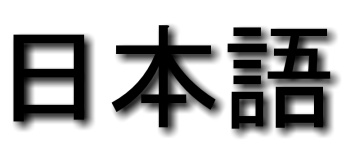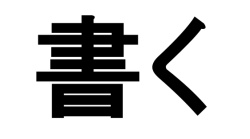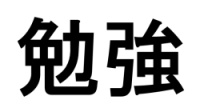Japanese Learning Guide
In the EJG Japanese Learning Guide, we answer the age old question: “Is Japanese hard to learn?” We can tell you right off the bat that the answer to that question is yes. Learning any language is a challenging task, and learning to speak Japanese is no exception. But the answer is also no.

Learning Japanese is no more difficult than learning any other language, provided that you have the guidance and the Japanese language learning tools and resources that you need.
![]()
Learning to Speak Japanese: Tips For Beginners
Are you a complete beginner who wants to learn to speak Japanese? Here are some tips to help you before you embark on your Japanese language learning journey.
First, the good news. Learning to speak Japanese is no more difficult than learning to speak any other language, and there are several characteristics of the language that actually make it easier to learn than many other languages. Why? Well let’s take a look at the components of Japanese language learning:
The Spoken Japanese Language

Japanese Pronunciation:
Compared to a tonal language like Chinese, Japanese pronunciation is pretty easy and not at all difficult to learn. There are a couple sounds that we don’t have in English, but unlike English, there are no irregular pronunciations.
The Japanese language has only 5 vowels (a-i-u-e-o), which are combined with 14 different consonants (K, G, S, Z, T, D, N, H, P, B, M, R, W and Y) to make up all of the units of sound in the Japanese language. Once you learn to pronounce these basic sounds in Japanese, you’re good to go with basic pronunciation.
Japanese Grammar:
While quite a bit different than English, Japanese grammar is also very straightforward and not that difficult to learn. And like Japanese pronunciation, there are no irregularities that you find in English and other languages.
Japanese grammar actually has some advantages over English, in that they use what are called particles (such as “GA”, “WA”, “DE”, “NI”, “WO” and “TO”), which are paired with words to construct sentences. One great thing about Japanese grammar is that these particle pairings can, to a certain extent, be used in any order, so you’re not strictly bound to a rigid sentence order as is the case with English.
Japanese Verbs:
The conjugation of Japanese verbs is also very straightforward and free of irregularities, so once you learn the basic rules, you can conjugate every verb in the same way. For example, the verb “iku” means “to go”; “ikeru” means “can or is able to go”; “ikaseru” means “to let or make (someone) go”, and so on. Once you learn the basic rules of Japanese verb conjugation, they can be reliably applied to every verb in the same way to imply the same nuances of meanings.
Japanese Vocabulary:
Many beginners mistakenly think that European romance languages like Spanish and Italian are easier to learn than Japanese because the vocabularies are so similar. Actually, you may be surprised to learn that Japanese vocabulary contains thousands of borrowed words from English that are commonly used in everyday speech. Can you figure out what “bee-su-boo-ru”, “te-ni-su”, “go-ru-fu”, “koo-hii”, “biiru”, and “kon-pyu-taa” mean? If so, then you can see that you actually already have a large Japanese vocabulary to get you started!
As you can see, there are many aspects of the Japanese language that make it easy to learn, or at least easier than you might have first believed.
![]()
Is Japanese Hard to Learn?
So far, we’ve learned that while it takes the same effort to learn Japanese that it does to learn any other language, learning to speak Japanese may in fact be much easier than you thought. So what is hard about learning Japanese?
Well, the hardest part about learning Japanese is its writing system. The Japanese writing system is as complicated as spoken Japanese is straightforward. Why is this? Japanese actually uses four, count ’em, four different scripts in their overall system of writing. Let’s take a quick look at each of them:
The Written Japanese Language

Hiragana
Hiragana is an alphabetic script of 46 phonetic symbols that mirror the basic Japanese sounds. Each hiragana symbol mirrors the sound it represents. For instance, the hiragana symbol “さ” represents the sound “SA”. Hiragana is sometimes used to write words in stand-alone fashion, and it is also added to the end of Chinese kanji characters to make verbs, adjectives, and adverbs.
Katakana
Katakana is a second script of 46 phonetic symbols. Some of these symbols are similar in appearance to hiragana. For instance, the hiragana symbol for the sound “KI” is “き” and the katakana symbol is “キ”. As you can see, they are quite similar, but the katakana symbols tend to be more simplistic. Katakana is primarily used to write words that have been derived from other countries, so all of those Japanese words from English that we learned above are written using katakana.
Roman Alphabet (Romaji)
Many first-time visitors to Japan are surprised when they see signs all over the place written in English. The Japanese language makes liberal use of the English alphabet, and this use of the English language in Japanese is called Romaji (which literally means “Roman characters”).
Japanese Kanji
The Japanese language originally had no writing system up until around the 4th century AD, when Chinese characters were imported from China. Every Japanese student learns 1,945 basic kanji characters, called the joyo-kanji, from first grade all the way through high school, but most Japanese know many more characters than this.
In addition, kanji characters have two types of readings: on-yomi, which represents the sounds of words that were derived from Chinese, and kun-yomi, which represents the readings of original Japanese words. A single kanji character or combination of characters may have several different on-yomi and kun-yomi readings.

It is the challenge of learning all of these kanji characters and their respective readings in combination with hiragana, katakana, and Roman alphabetic script that makes learning to read and write Japanese so difficult.
On the other hand, as you no doubt are aware, kanji characters also contain meanings, so in that respect, kanji can actually make Japanese easier to read, or at least understand.
As you can see, it is a considerably daunting and time consuming task to learn hiragana, katakana, hundreds if not thousands of kanji characters, and then learn to read them all when they are combined to form the written Japanese language. There is no getting around it. The Japanese writing system is hard to learn.
![]()
What is the Best Way to Learn Japanese?

So what is the best way to learn Japanese? Well, that depends on the time, resources, and money you have available as well as your ultimate language learning goal. Do you want to master Japanese and become both literate and fluent in the language? Do you want to be able to read manga and watch anime in their original Japanese language versions? Do you want to learn daily conversation so you can converse with your Japanese friends? Or do you just want to learn a few basic phrases that will serve you well when you travel to Japan?
Consider your own personal Japanese language learning goals as our Japanese Learning Guide reviews some of the best ways to go about learning Japanese.
![]()
College or High School Japanese Language Classes
Pros: structured instruction in a classroom environment; immediate feedback from teachers; classmates to study alongside with.
Cons: classroom instruction can be boring; quality of instruction may be poor, resulting in bad language habits from the outset; may be expensive.
A good college or high school Japanese language class will provide you with a solid foundation of Japanese grammar and the Japanese writing system, which will enable you to go on to more advanced learning. However, the operative word here is good, and not all school language programs are. Therefore, before choosing a school language program (assuming you have the option of choosing, do some research.
 Find out who the teachers are (are they native speakers or non-native speakers who have mastered the language and been trained to teach?
Find out who the teachers are (are they native speakers or non-native speakers who have mastered the language and been trained to teach?
 Find out what textbooks are used.
Find out what textbooks are used.
 Find out whether the program emphasizes speaking or reading and writing, or both.
Find out whether the program emphasizes speaking or reading and writing, or both.
 If possible, sit in on a class before enrolling in order to get a feel for the quality and teaching style.
If possible, sit in on a class before enrolling in order to get a feel for the quality and teaching style.
 Try to find a program that emphasizes the spoken language.
Try to find a program that emphasizes the spoken language.
 Try to find a program with experienced native speakers (although there are some excellent non-native instructors as well).
Try to find a program with experienced native speakers (although there are some excellent non-native instructors as well).
 Try to find a program that abides by a strict “Japanese only” approach during language learning sessions.
Try to find a program that abides by a strict “Japanese only” approach during language learning sessions.
![]()
Study at a Japanese Language School in Japan
Pros: opportunity to study in Japan for immersion in language and culture; instruction by native speakers
Cons: expensive; student visa may be required; quality of programs vary
If you have the opportunity to study at a Japanese language school in Japan, by all means go for it! The opportunity to travel to Japan and immerse yourself in the language and culture alone is reason enough to go. But be aware of the following:
 Many Japanese language schools are very expensive, independent of travel and living costs.
Many Japanese language schools are very expensive, independent of travel and living costs.
 The quality of Japanese language schools may vary from excellent to poor.
The quality of Japanese language schools may vary from excellent to poor.
 You may be required to acquire a student visa, although a visa may not be required for a short-term stay.
You may be required to acquire a student visa, although a visa may not be required for a short-term stay.
![]()
Pros: opportunity to study in Japan for immersion in language and culture; opportunity to make Japanese friends
Cons: limited opportunities available; may be expensive; actual Japanese language instruction may be poor
![]()
Pros: you can work at your own pace; less expensive then classroom instruction; some learning materials more fun than standard classroom textbooks; ideal for casual study; ideal for “trying out” Japanese language learning to decide if you like it before investing more time and money in more advanced instruction
Cons: can be difficult to stay motivated; lack of instructor feedback; lack of advanced instruction
Japanese language self-study using books, CDs, or online Japanese courses can be a great way to “get your feet wet” with the Japanese language while you study and learn at your own pace. In order to help you with your self-study of Japanese, we have created a page that lists our favorite Japanese language learning resources.
![]()
The Most Important Japanese Language Learning Skills
As you can see, there are many options out there if you really want to learn Japanese. The one thing you should know, however, before you embark on any Japanese language learning program is that there is no magic pill out there that you can take that will enable you to instantly master Japanese.
Learning Japanese, like any language, is a process. It is much more a journey than a destination, because there is ALWAYS more to learn. Therefore the most important language Japanese language learning skills you will need are persistence and patience!
![]()
Hopefully our short Japanese learning guide will help you get your Japanese language learning off to the right start. Ganbatte Kudasai!!!! (Best of Luck!).
![]()
![]()

